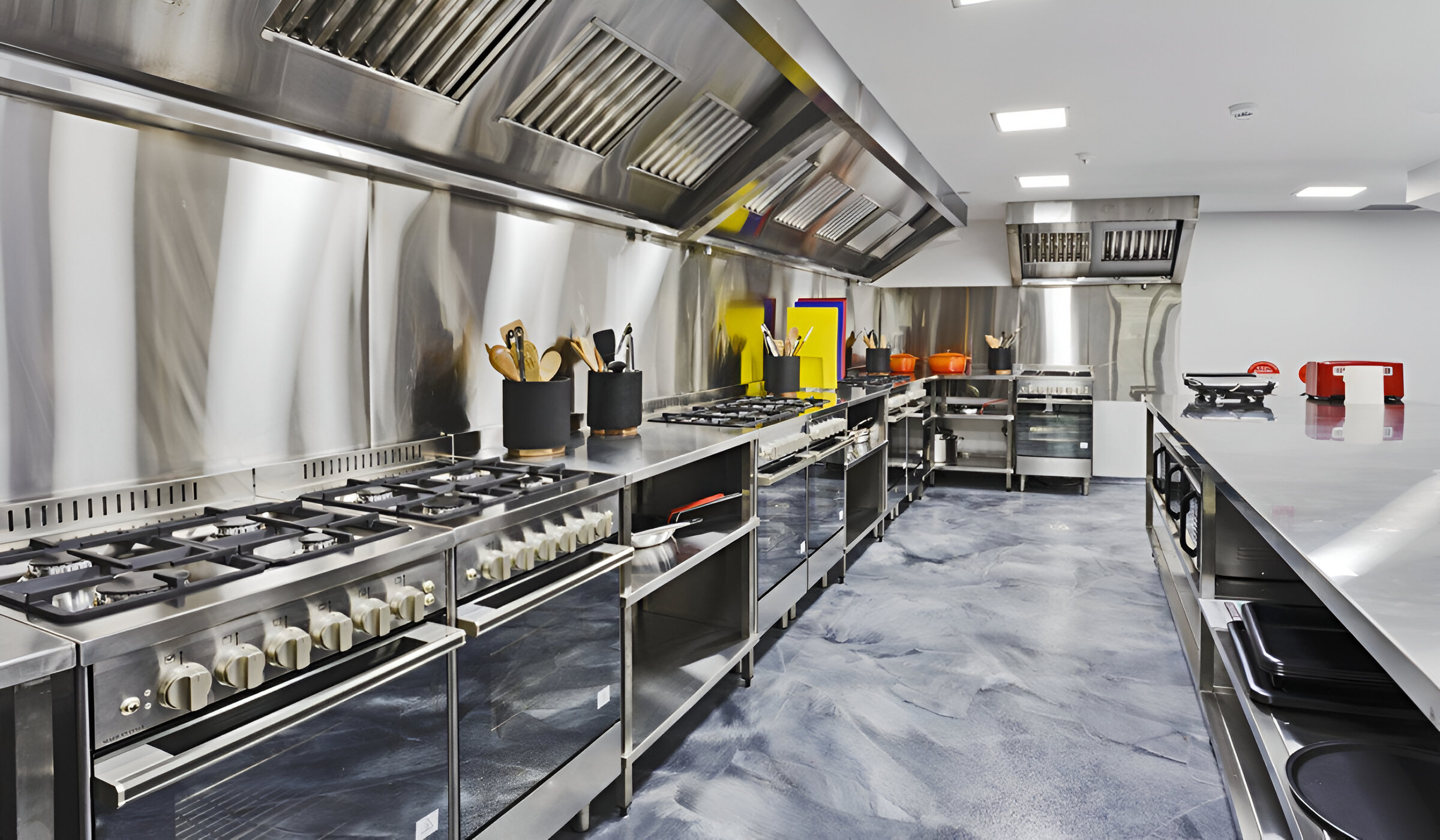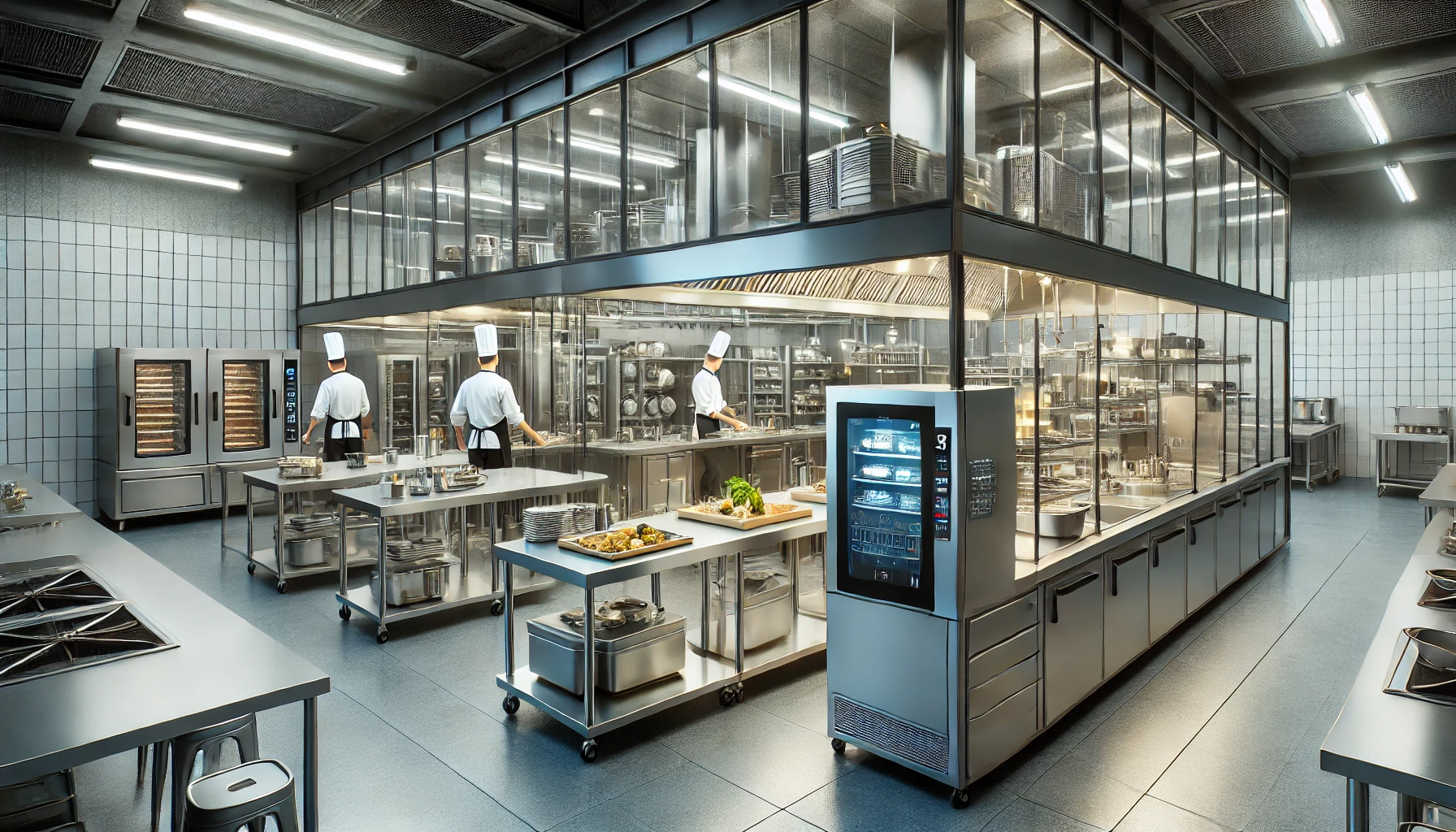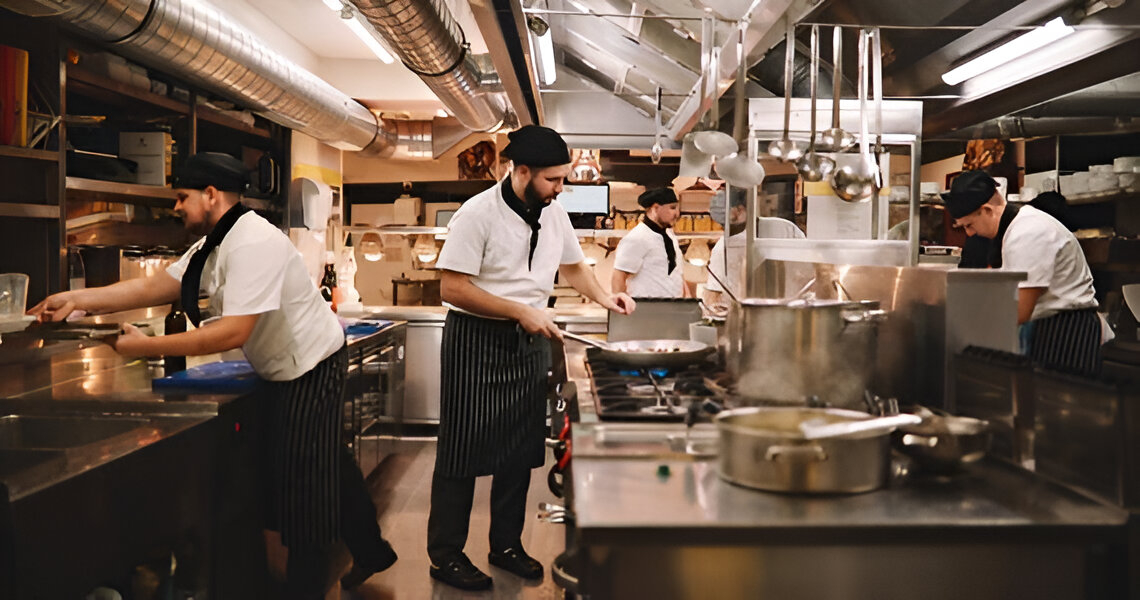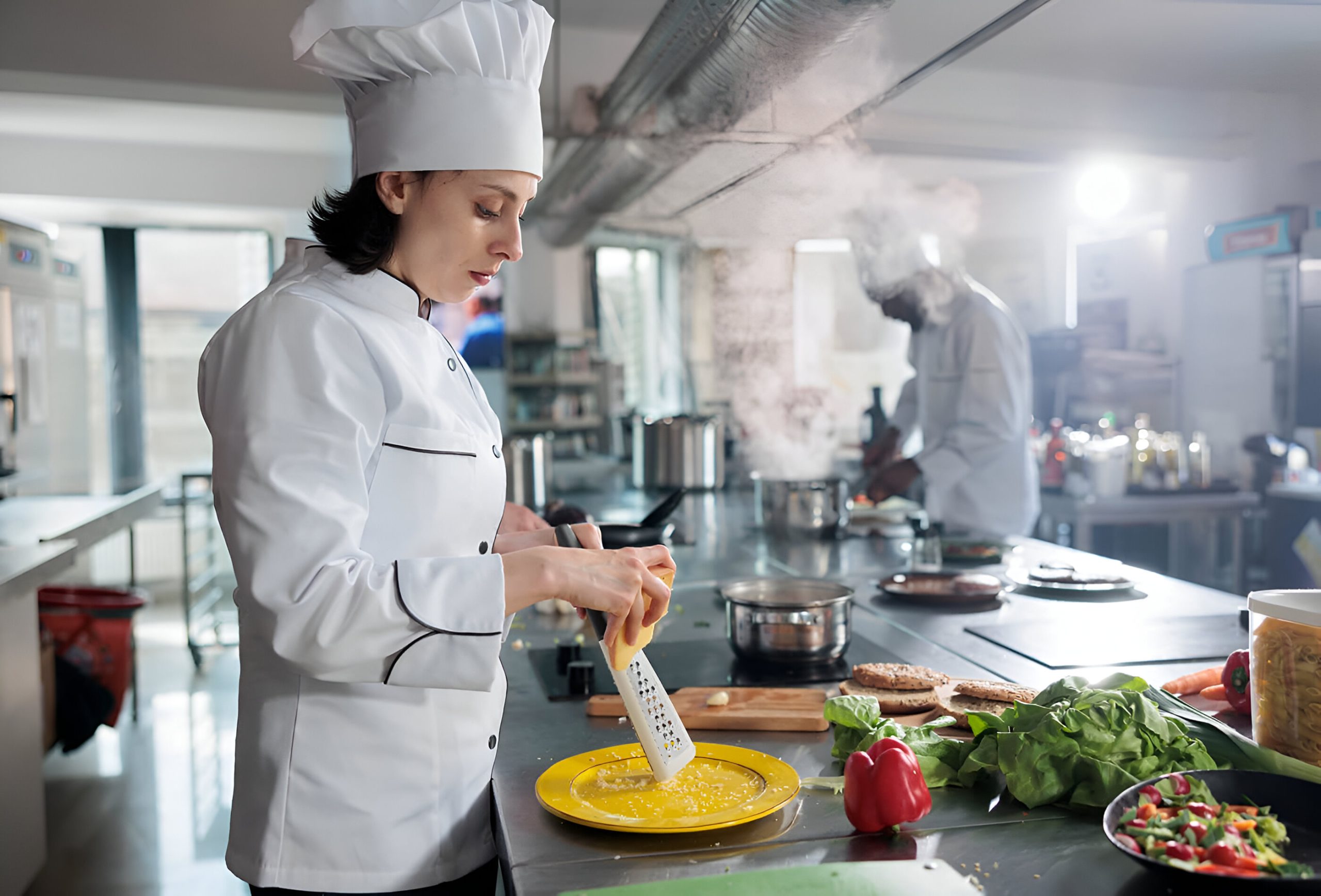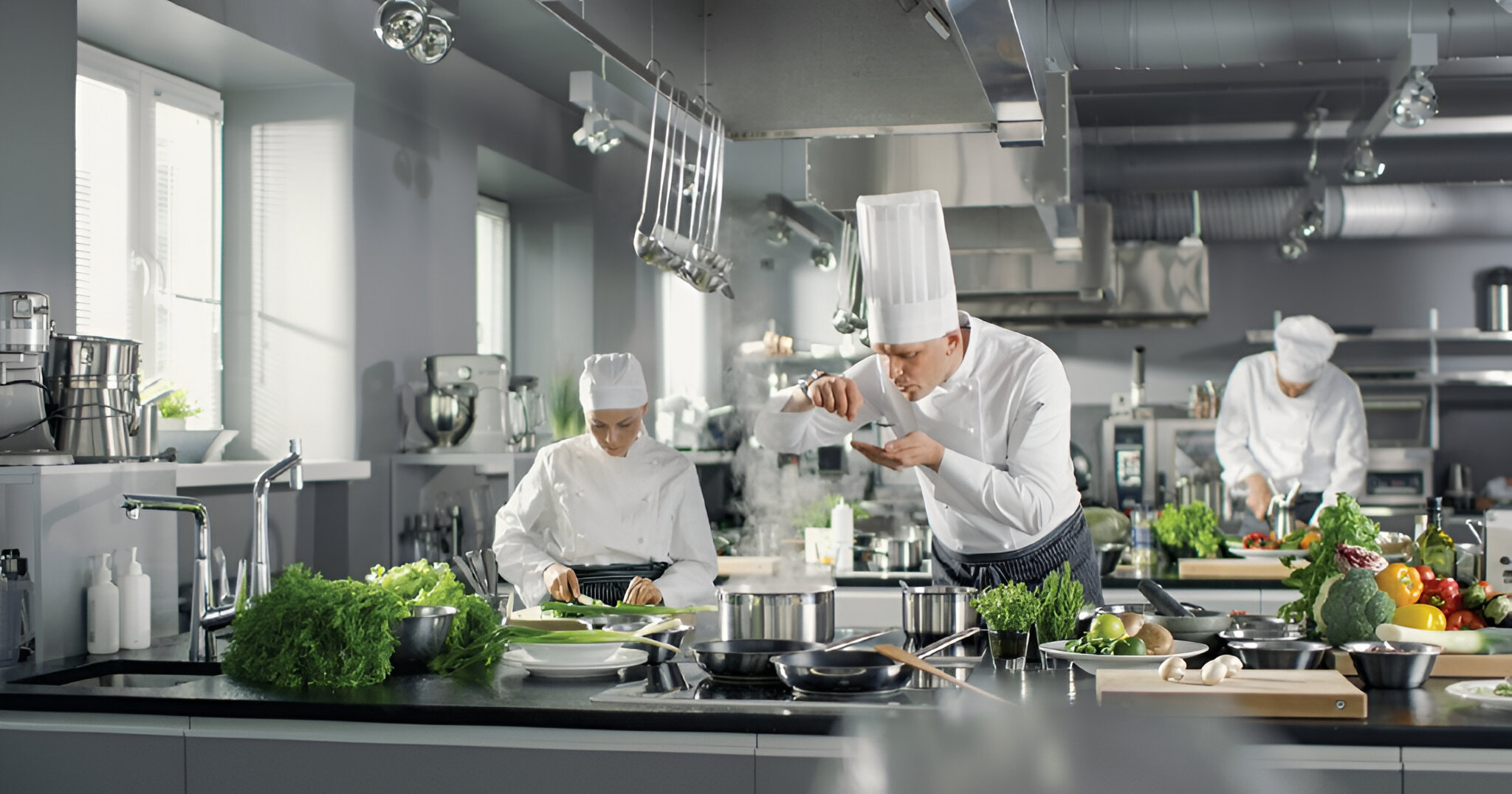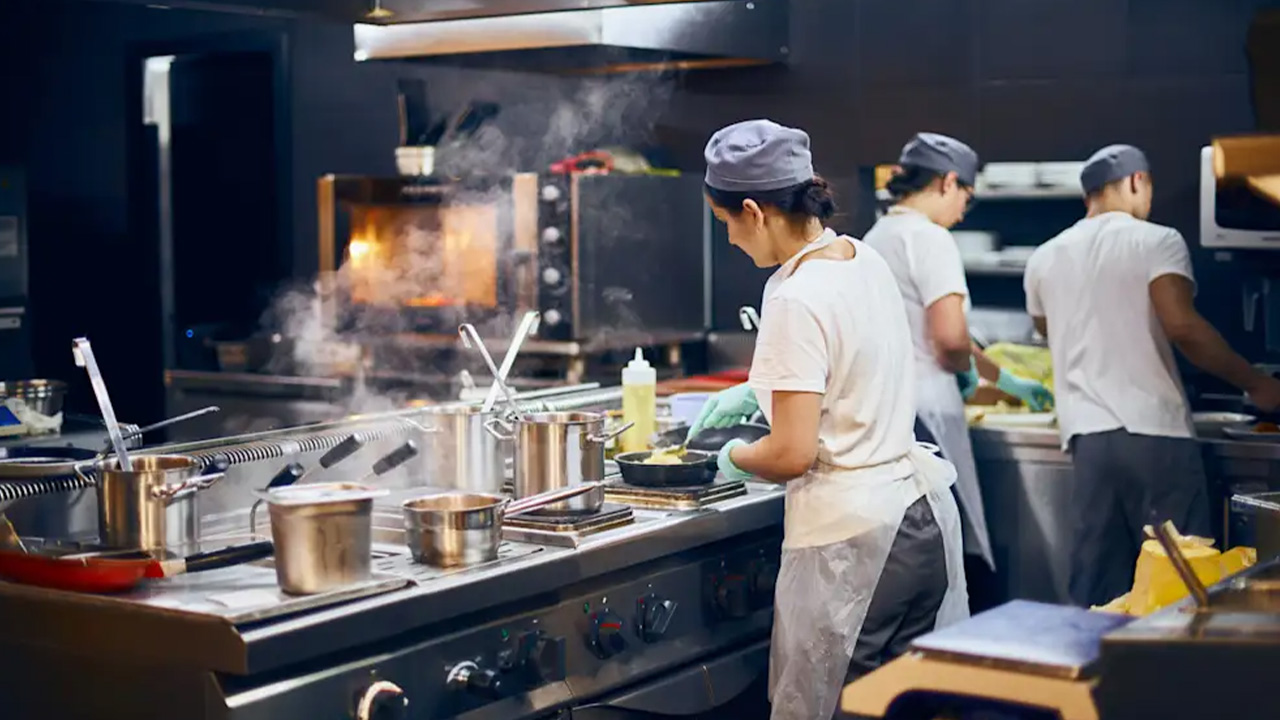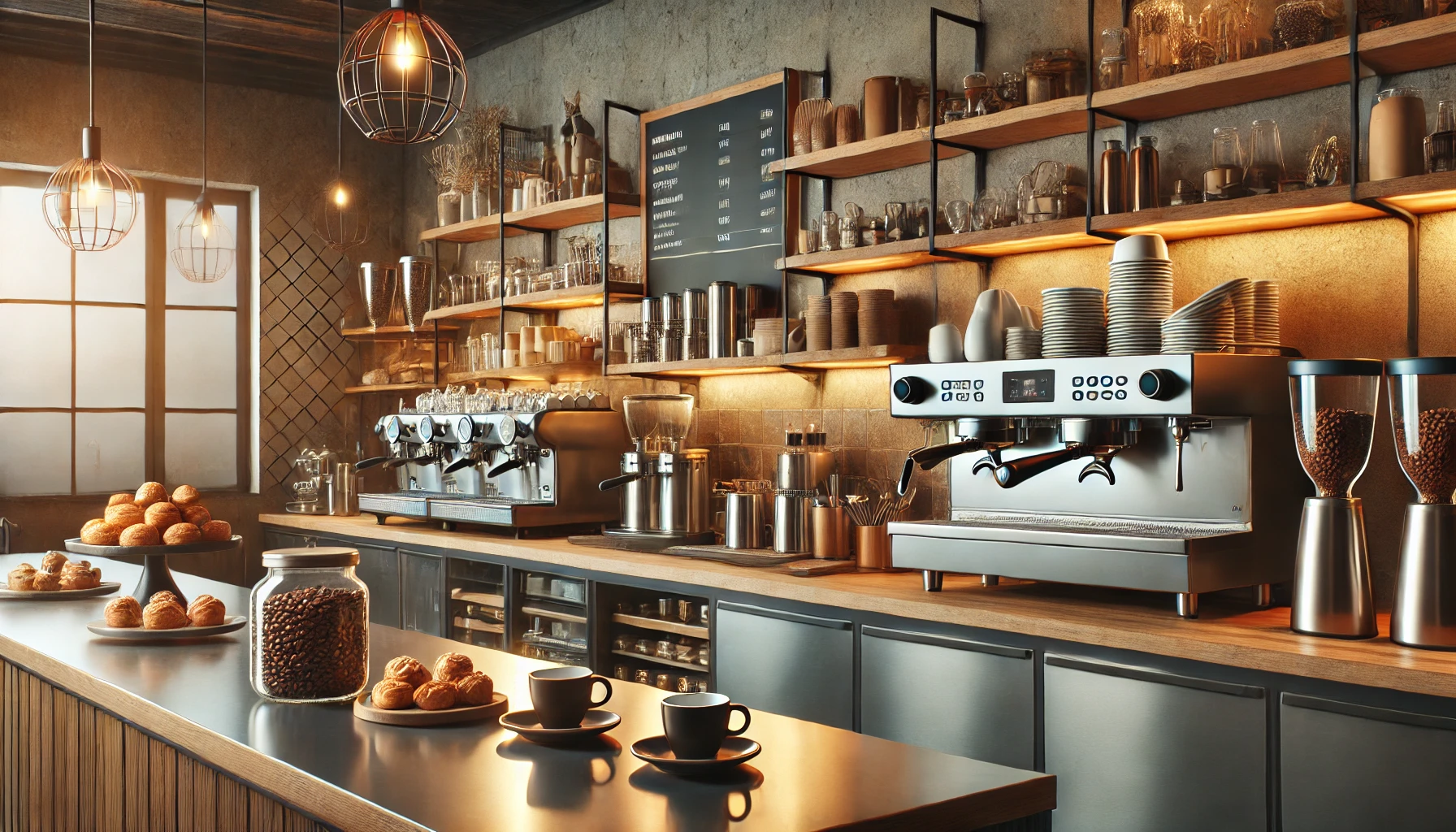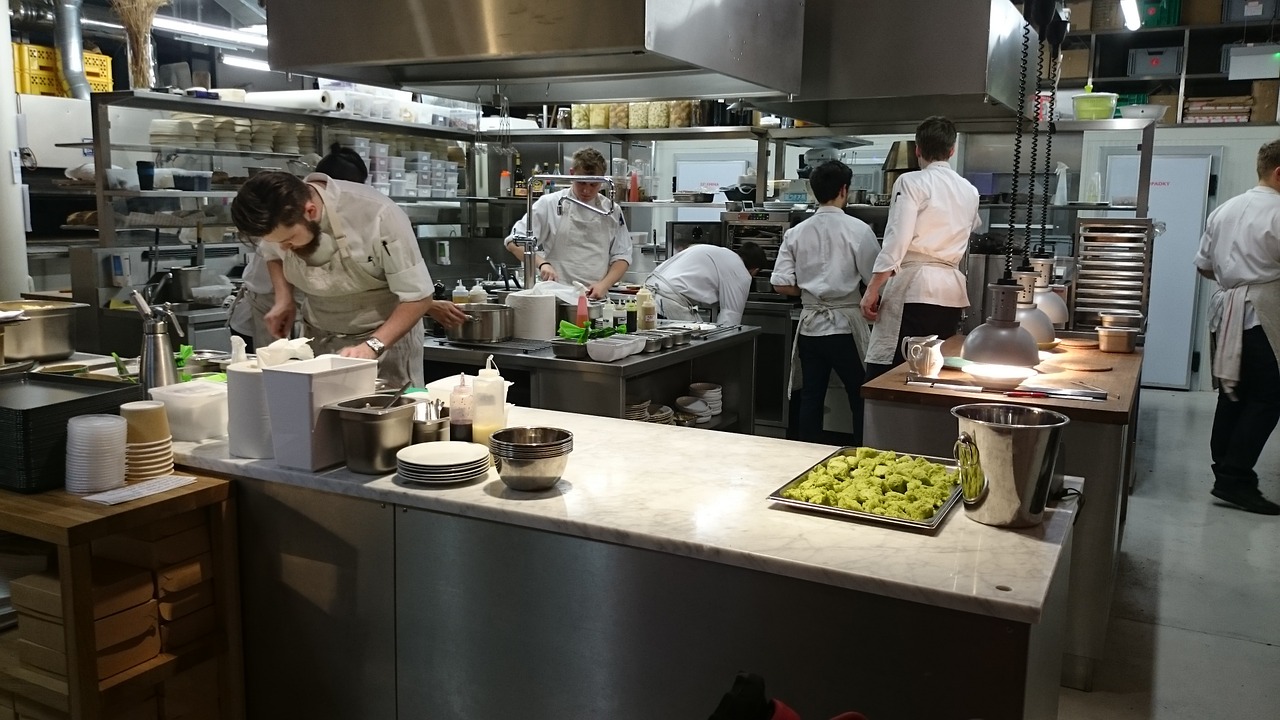
Kitchen as a Service: A Game Changer for Restaurants
The restaurant industry is changing a lot because of cloud kitchens. These kitchens, often called ghost kitchens, only use commercial kitchen space to prepare food for delivery. They do not have a dining area. This new way of working lowers costs and gives restaurants more flexibility. It also creates new chances for food businesses, especially in India’s fast-growing food delivery market.
Understanding Kitchen as a Service (KaaS) and Its Impact on the Indian Restaurant Industry
Understanding Kitchen as a Service (KAAS) is important for restaurants in India. This new idea changes regular kitchens by providing cloud kitchen solutions. KAAS offers shared kitchen spaces. This helps food entrepreneurs operate without needing a physical location. By using cloud kitchen business models, restaurants can make operations smoother, cut costs, and meet the rising need for food delivery services. Adopting KAAS can boost efficiency, increase food quality, and help navigate the changing restaurant industry.
The Rise of KaaS in India: An Overview\
India is seeing more people living in cities and an increase in ordering food online. This makes it an excellent place for the KaaS model to grow. Virtual restaurants are an example of this trend. These restaurants operate only online. They use shared kitchen space from KaaS providers to cook and deliver food. This model helps food entrepreneurs test new ideas and start businesses with less financial risk.
KaaS is attractive because it helps solve problems faced by traditional restaurants. These problems include high rents, staffing costs, and complicated operations. By offering ready-to-use commercial kitchen infrastructure, KaaS lets businesses focus on what they do best—making tasty food and delivering it well to customers. This change from traditional stores to a more flexible, tech-driven approach reshapes how food businesses work and compete in India.
The growth of KaaS is also helped by more smartphones, low-cost internet, and people getting used to online food delivery services. This mix of factors makes it easier for virtual restaurants and other food businesses to succeed using the KaaS model.
How KaaS Differs from Traditional Restaurant Models
KaaS is different from traditional restaurant models because it focuses on delivery-only services. There is no need for a physical location, which allows businesses to work as ghost kitchens. This basic change brings several benefits to these businesses’ operations and finances.
Traditional restaurants require a lot of money at the start for things like real estate, decor, and extra staff. On the other hand, KaaS cuts down on costs by only needing a kitchen. Businesses can use their resources better since there’s no dining area to handle and fewer employees to hire. They can improve food quality and make delivery faster.
Also, the KaaS business model provides more flexibility and scalability. Restaurants can easily adjust to market changes. They can try out new cuisines or create virtual brands without being tied to one location. This quick response helps them follow new food trends, serve a more extensive customer base, and refine their menu based on data.
The Operational Mechanics of KaaS for Restaurants
KaaS makes running a restaurant easier. It provides essential support like a commercial kitchen with all needed appliances and utilities. This lets restaurants focus on what they do best, such as menu planning, preparing food, and managing deliveries.
Restaurants work with KaaS providers. They first choose the right kitchen space. After that, they can tailor it to fit their specific needs. They take care of hiring staff and buying ingredients. They also use technology to help with deliveries and to manage orders. This includes delivery apps and POS systems.
Setting Up Your Kitchen Space for Maximum Efficiency
Optimizing your commercial kitchen space is very important in a KaaS model. Efficient operations can lead to higher profits. Careful planning and sound design of the kitchen layout help boost productivity. Think about the flow from storing ingredients to cooking and assembling the food. This will reduce movement and improve workflow.
Using technology is also key for a KaaS kitchen. A good Kitchen Display System (KDS) can simplify order processing. It helps communication between the kitchen staff and delivery people. An efficient KDS lets you see order details, preparation times, and real-time pick-up information. This reduces mistakes and waits times, ensuring orders are timely.
Also, invest in space-saving kitchen equipment like multi-functional ovens or vertical storage. This will make the most of the kitchen space. By doing this, your Kitchen can handle many orders without slowing down or losing food quality.
Technology Integration in KaaS for Streamlined Operations
In today’s tech-driven world of food delivery, using the right tools in your KaaS operations is very important. A strong Point of Sale (POS) system is essential for a successful KaaS business. A modern POS system works well with online ordering platforms and delivery apps. It brings together orders from many sources into one place. This makes it easier to manage orders, reduces mistakes, and gives valuable information about sales.
Also, linking your POS system with inventory management software helps automate tracking of what you have in stock. This reduces waste and ensures you always have the needed ingredients. Seeing inventory levels in real-time enables you to buy what you need efficiently and lowers food costs.
By connecting your production kitchens directly with delivery drivers, a well-integrated system helps improve delivery logistics. Customers can track their orders as they are being delivered. At the same time, you can see the delivery routes and times. This ensures a smooth delivery experience, which leads to happy customers.
Key Benefits of Adopting KaaS for Restaurants in India
Adopting KaaS helps restaurants in India in many ways, especially by saving money and improving their operations. The lower costs to start and the ability to grow make it an excellent choice for restaurants big and small.
KaaS reduces the financial risks linked to traditional restaurant setups. This lets restaurants use their resources wisely and make a profit more quickly. Also, this model helps restaurants adjust to changing customer preferences. They can try new ideas and grow their customer base by using technology and expanding their delivery areas.
Cost-Effectiveness and Reduced Overheads
One of the best benefits of KaaS is that it saves money. Traditional restaurants face many problems. They often have high rents and must spend a lot on furniture and decoration. There are also ongoing costs for utilities and maintenance. KaaS cuts down these costs a lot.
The low risk of the KaaS model comes from the ability to rent kitchen space as needed. This helps businesses avoid long leases and sizeable upfront investment. It is great for startups and companies trying new ideas. They can test their concepts without a significant financial risk.
In addition, KaaS removes the need for many front-of-house staff. This is a significant cost for traditional restaurants. Businesses can save on labour costs without lowering their food quality by focusing on making and delivering food. This way of working helps restaurants set better prices, attract customers, and earn more profit.
Flexibility and Scalability for Food Businesses
KaaS offers food businesses great flexibility and cost savings. This model helps restaurants reach more customers without being tied to a specific place. They can try out new types of food or start virtual brands focusing on special diets or unique markets.
For established restaurants, KaaS allows them to test new locations quickly. They can open a cloud kitchen in a different city or neighbourhood. This way, they can see how well the market responds and decide if they want to grow further based on their learning.
Another significant benefit of KaaS is that it makes it easy to grow operations. If your customer base increases, you can get more kitchen space or add more equipment. You could also work with other food businesses to share resources. This flexibility lets companies adjust to changing customer needs, update their menu for different seasons, and handle more orders efficiently.
Challenges and Solutions in Implementing KaaS
KaaS offers a great chance, but using this model in India has challenges. Businesses in this field must carefully follow the rules about food safety and licenses.
They must also keep food quality high, make sure customers are happy, and stand out in a busy online marketplace. Meeting these logistics needs is another issue to tackle. By understanding and dealing with these challenges early, KaaS businesses can do well in the competitive food delivery market.
Addressing Quality Control and Customer Satisfaction
Maintaining good food quality is crucial for KaaS businesses to succeed in a competitive market. Happy customers mean more repeat orders and positive reviews. That’s why strong quality control at every step of food preparation is necessary.
Using fresh, high-quality ingredients and keeping strict hygiene standards is a must. It’s also important to regularly train kitchen staff on food safety. Ensuring food is kept at the right temperature when stored and delivered matters, too.
Additionally, asking for customer feedback through online reviews can help. Addressing concerns quickly helps keep customer loyalty. Clear information about ingredients, allergens, and delivery times can build trust and improve customer experience.
Success Stories: Indian Restaurants Thriving with KaaS
The success of many Indian restaurants using the KaaS model shows its great potential. These stories show how KaaS helps businesses solve common problems and grow quickly.
Well-known restaurants are growing their presence, while new startups are shaking the market with fresh ideas. KaaS has genuinely changed the game. These success stories inspire food entrepreneurs and show how powerful this new business model can be.
Case Study 1: A High-End Restaurant’s Transition to KaaS
A well-known high-end restaurant in Mumbai had trouble with high rents and fewer customers. To fix this, they tried using cloud kitchen business models. They worked with a KaaS provider to create a kitchen space for delivery orders. This change helped them keep their current customers and reach more people through online food delivery services.
They could focus on what they do best by not needing a significant and costly dining area – making excellent dishes. This move turned out very well. The restaurant saw a big jump in orders and lower costs. They kept the same high food quality and nice presentation and worked well with delivery. This helped them succeed in the challenging food delivery market.
This example shows that even popular high-end restaurants can use the KaaS model to save money, grow their customer base, and reach more people without changing their brand.
Case Study 2: A Startup Leveraging KaaS for Rapid Growth
A new food entrepreneur in Bangalore wants to start a health-focused virtual brand. Since they had a small budget, they couldn’t open a traditional restaurant. But the KaaS model helped them a lot. It let them rent a kitchen space that was fully equipped for a low cost.
They used social media marketing and online delivery platforms to reach the right people and grow their customer base quickly. The KaaS model also allowed them to try different menu items based on customers’ liking. This way, they could improve their meals to meet the needs of health-focused customers.
This story shows how a good idea, strong marketing, and the KaaS model can help food entrepreneurs push past financial struggles. They can then build their brands and grow quickly in the busy food delivery market.
Conclusion
In conclusion, Kitchen as a Service (KaaS) is changing the restaurant industry in India. It offers cost savings, flexibility, and the ability to grow. KaaS helps food businesses run smoothly with better operations and technology. Many Indian restaurants that have adopted KaaS show that it can lead to growth and efficiency. By using kitchen space better and improving quality control, restaurants can keep their customers happy. Using KaaS could help them stay ahead in the fast-changing restaurant world.
Also Read:- How to Build a Profitable Cloud Kitchen Business
For interesting Posts, follow us on Instagram.
